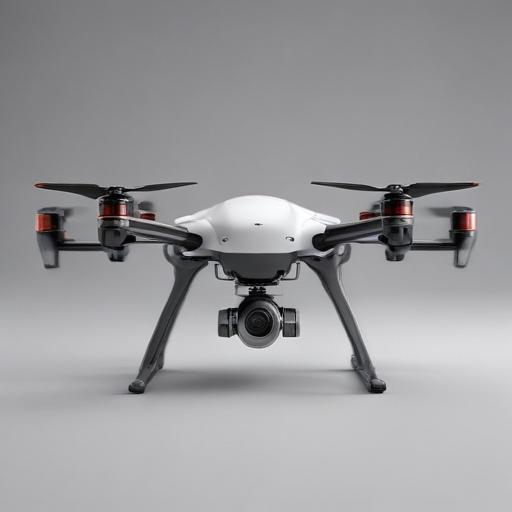Insta360 is expanding its lineup with a first-ever drone, launching under a new brand called Antigravity. The Antigravity A1, expected to ship in January 2026, bundles a 360-degree camera with a dedicated set of goggles, promising a new way to fly and film from the air without constantly aiming a camera or worrying about framing.
The drone resembles a compact, foldable mini quad similar to the DJI Mini, with a sub-250-gram frame. Its standout feature is the built-in 360-degree camera, which lets you fly up and around a scene and simply look in the direction you want to see. Because the camera records in every direction at once, you can create virtual zooms, pans, and spins after the flight, effectively editing the footage with a headset view that stays immersive.
A Verge reviewer who tested an early prototype described the experience as transformative: you don’t need to think about filming while you fly. The 360-degree footage allows for unique perspective shifts, such as counting birds in a flock you didn’t specifically aim for during flight. However, the reviewer noted limitations common to wide-angle, multi-camera systems: image quality is spread across a broad canvas, so zooming in can reveal softer detail, and the system currently tops out at 8K resolution at 30 frames per second (5.7K at 60fps). The footage is best captured at closer ranges, where stitching lines between the top and bottom cameras remain less noticeable.
In practice, the A1 emphasizes ease of use over raw speed or range. The prototype appeared slower and steadier than sportier racers, with front-facing obstacle sensing that aggressively protects the user from risky moves — for instance, it won’t easily pass under a park structure. The reviewer also noted some visual artifacts and a modest wireless/transmission experience in the headset, suggesting the final product may need refinements to match leaders in the category.
The A1’s control options include a goggles-based point-and-shoot style, where you direct the drone by moving your hand, plus a traditional controller and plans for a second twin-stick controller. The goggles provide a live feed with a built-in screen and passthrough camera, and a picture-in-picture view helps pilots keep track of the drone’s direction to avoid collisions. Optional propeller guards are expected, along with the AI-powered features that aim to simplify flying even further.
Pricing and availability remain partial at this stage. The company suggested the all-in-package—goggles plus a controller—could be priced below a typical DJI Mavic bundle, potentially around $1,300, though regional pricing may vary due to tariffs. Insta360 also stressed it is launching Antigravity as a separate company with its own team and US servers, acknowledging the importance of regulatory alignment and attempting to reassure officials that the drone is intended for recreational use rather than any weaponization. A “payload detection” demo demonstrated a safety feature that forces a landing when a simulated payload is added, underscoring the emphasis on safety and responsible use.
Executive comments from a company representative indicated optimism about US retail partnerships and broader distribution, while recognizing that the venture carries significant risk in a crowded market. The demonstrative stance suggests that the company expects the drone to influence how both consumers and regulators think about 360-degree aerial videography.
Takeaways for prospective buyers and industry watchers are clear: the Antigravity A1 could usher in a new category of drone that emphasizes immersive, post-flight editing and hands-free piloting through head- or gesture-based control. While it may not yet replace high-end action drones for speed, endurance, or long-range shooting, it challenges the conventional approach to aerial filming and could spur both incumbents and competitors to rethink design and pricing.
Summary: Insta360’s Antigravity A1 introduces a new drone concept that pairs a 360-degree camera with integrated goggles, enabling immersive, post-flight editing of wide-angle footage. It prioritizes ease of use and safety, with early impressions noting strong novelty but ongoing tradeoffs in image quality at scale and in-field performance. Aiming for a January 2026 launch with potential sub-$1,400 pricing and a focus on consumer-friendly features, the device could reshape how people fly and film from the air while inviting close scrutiny from regulators and competitors alike. Positive spin: if successful, it could broaden creative possibilities in aerial storytelling and drive innovation across the drone market.
